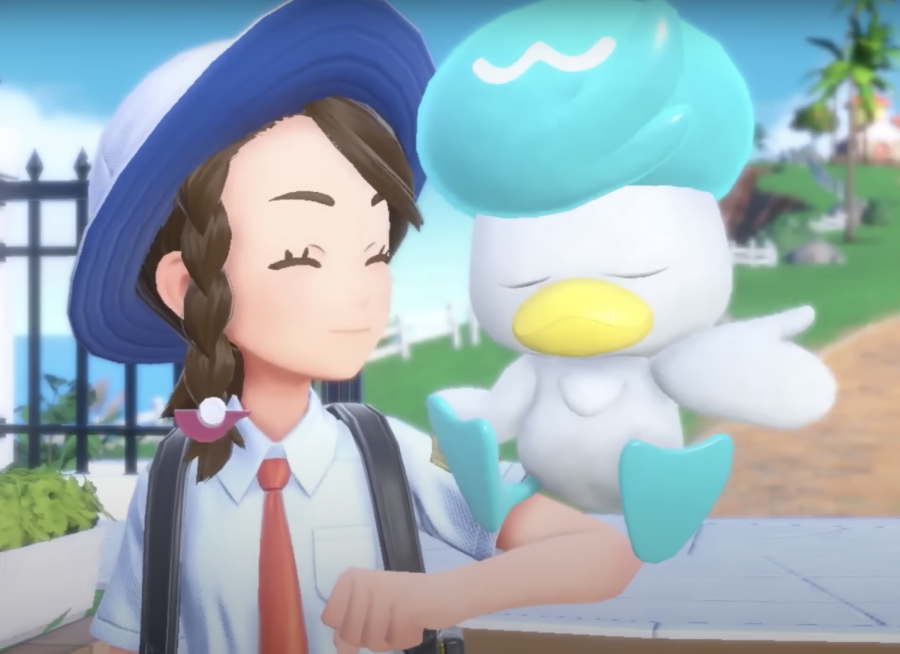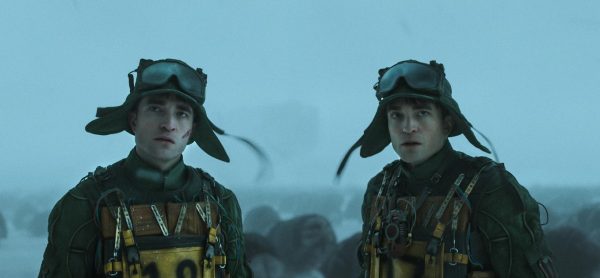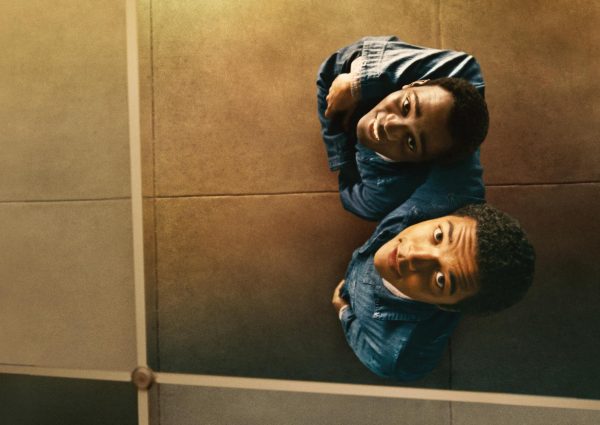Pokémon Scarlet & Violet: Nobody Expects the Paldean Inquisition!
The recent slew of Pokémon games received rather mixed reviews, primarily from the older fans. The idea of Pokémon has changed over the 26 years that the series has existed. Fans have seen numerous regions inspired by provinces in Japan, New York City, France, England, and now Spain. Pokémon Scarlet & Violet released worldwide on Nov. 18, 2022 on the Nintendo Switch. As someone who has played almost every Pokémon game to be released since the Heartgold and Soulsilver remakes came out in 2009, I knew I had to pick up Violet, the version that my older brother wouldn’t be getting; a time honored tradition that we’ve been keeping up until now.
Leading up to the game’s release, fans were given the usual drip-feedings of information: a new Pokémon here, a trailer to be analyzed in-depth there, and social media posts that fit the game’s aesthetic of the past and the future. This is evident from the box-art legendaries, Koraidon and Miraidon. Koraidon is a dragon-inspired creature whose name takes inspiration from “kodai,” which means “ancient” in Japanese. Miraidon, on the other hand, is a purple, jet-looking automaton. Miraidon’s name is more obvious than Koraidon’s, as “mirai” is Japanese for “the future.”
The new Pokémon within the Paldea region are often-times discussed in different tones. Pokémon like Fidough, a dog Pokémon made of bread; Pawmi, this region’s pika-clone; Lechonk, a fat pig Pokémon; Greavard, a grave-stone puppy; and Smoliv, a little olive; are often discussed like children, with fans gushing over the adorable physical appearance of them. This is backed by imposing titans like Cetitan, Klawf, Amarouge, and Ceruledge which are often talked about in the sense that their intimidating looks lead to awe from fans. The last two Pokémon are variant exclusives, Armarouge being in Scarlet, and Ceruledge in Violet. Their names are giveaways for which version they belong to.
Another interesting aspect of these games is the story. The story in most Pokémon games goes as follows: get your starter, fight the eight gyms, defeat the elite four, fight the evil team alongside the gyms, and catch every Pokémon in the regional and national dex. This game differs from this in the way that there are still eight gyms, dealing with eight of the 18 Pokémon types, but there are also 10 more challenges to deal with the other 10 types. This results in the first game where all 18 types have some form of attention given to it, as opposed to the usual of grass, water, fire, psychic, fighting, etc.
The story does require the player to complete all three paths in order to reach the true ending, which sees the player venture into the “great crater of Paldea” to save that game’s respective professor. However, this isn’t the only thing for players to complete. Throughout the game the player is reminded of these “classes” which you can take at the academy which serves as a middle-point of the game’s map. These classes don’t hold much challenge for those well-versed in Pokémon’s many aspects, but they do allow for the player to kill time, learn more about this game’s new mechanic of sandwich making, and can allow one to begin side-quests for each professor once all eight classes for each subject are completed.
In retrospect, these games are easily some of the most interesting and refreshing takes on the idea of Pokémon in years. The open world allows for players to explore at their own pace, the 18 different types are given their own spotlight with different challenges. The Pokémon designs are, for the most part, unique and interesting enough to not be immediately written off. It is also nice that the Pokémon company is focusing on Spain and Portugal with these games, as geographically, they can be connected to the Kalos region through future DLC or a future game.
When asked about these games, one can easily say that Scarlet and Violet are Pokémon games for non-Pokémon players, or for those who hated Sword & Shield. If you are on the fence about buying them, do not hesitate anymore, as they offer a very complex, emotional at points, and gripping narrative behind their Spanish-designed walls. For those questioning which version to get, there’s only two questions to answer: do you want a male or female professor, and do you enjoy the past or the future more?







Eric • Feb 10, 2023 at 11:26 AM
Great Review!